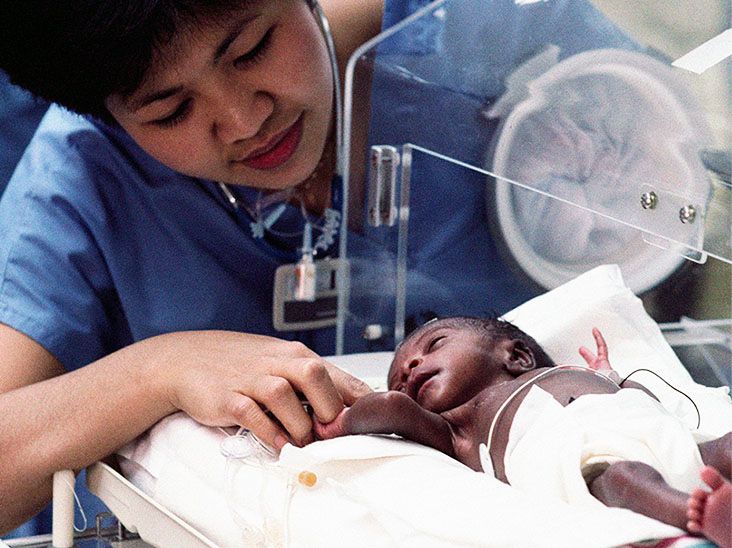You know that feeling when you're looking at your family health history and suddenly come across something you've never heard of before? Maybe it's during a routine blood test, or you're filling out paperwork for a new doctor. That's often how people first learn they carry the sickle cell trait or even have the full-blown condition.
It can feel overwhelming at first like getting handed a puzzle piece without seeing the bigger picture. You might wonder: How did this happen? Will my kids get it too? What does this mean for my future?
I get it. When I first started diving into the world of genetics, these were the same questions racing through my mind. And guess what? You're not alone in asking them. Understanding sickle cell inheritance might sound intimidating, but I promise it's one of those topics that becomes so much clearer once you break it down together with real-life insights and science-backed facts.
So let's chat about this genetic journey who gets it, where it comes from, and most importantly what you can do next. Whether you've recently received test results or just want to be informed, this isn't going to be some textbook lecture. Think of it as a friendly conversation around your kitchen table with someone who's been there too.
Genetics Breakdown
Alright, let's start with the basics because no one signs up for a PhD in molecular biology just to figure out their health status, right? At its core, sickle cell genetics has everything to do with an interesting twist in how your hemoglobin (that's the stuff in red blood cells that carries oxygen) works.
Here's the plot twist: there's a mutation in the HBB gene the gene responsible for making beta-globin, part of regular adult hemoglobin. This single-letter spelling mistake on your DNA page creates hemoglobin S instead of normal hemoglobin A.
Imagine if I told you that one day, your backpack started folding itself into all sorts of shapes sometimes useful rectangles, sometimes awkward zigzags. That's kind of what happens inside red blood cells when hemoglobin S gets involved. These deformed cells can cause real problems by clogging up tiny blood vessels or breaking apart entirely.
This mutation didn't appear randomly either (well, technically almost nothing does). Scientists know that having one copy of this gene actually offers protection against malaria which explains why it's more common in regions where malaria has long been a threat. But remember, names don't define worth here. Traits linked to ancestry aren't good or bad they're just part of being human.
Passing It Down
Now, here's where things get fascinating and honestly, a bit like a choose-your-own-adventure story. Your version depends entirely on what mix of genes your parents passed along. We're talking about how sickle cell is inherited, and it's completely tied to the rules of autosomal recessive inheritance.
Picture this: Everyone gets two copies of every gene one from dad, one from mom. If both parents carry just one copy of the altered gene (and we call that "sickle cell trait"), then each child has a 25% chance of inheriting the condition. That leaves 50% odds of inheriting the trait and 25% of getting neither.
Want to visualize it? Just imagine two decks of cards mixed together some cards show the normal gene ("A"), others the sickle mutation ("S"). Each parent contributes one card per child, and depending on which combination lands face up, different realities unfold.
Let me paint a quick example. Sarah's parents never had symptoms, but both unknowingly carried the trait. Neither realized they were playing genetic roulette until Sarah herself faced complications later. It wasn't anyone's fault simply the luck of the draw.
Interestingly enough, because of this unpredictable passing along of genes, yes even people without known family history can find themselves dealing with sickle cell disease genetics. Even if the chances are small, doctors still consider testing valuable whether or not there's an obvious background.
Who Gets Affected
Time to take a step back and see where this story unfolds on the bigger map. The numbers give us insight into how powerful evolution can be and why certain health patterns appear more in certain populations.
| Region | Estimated Cases (Annual) | Prevalence Rate |
|---|---|---|
| Sub-Saharan Africa | Over 300,000 births/year | ~12% |
| Middle East | Around 25,000 | ~0.5% |
| India | Approx. 45,000 | Varies widely |
| Americas (African diaspora) | ~2,000-5,000 | 0.150.25% |
Notice any themes? The reason certain regions bear higher rates isn't about racial superiority or inferiority. It's actually nature taking advantage of available resources. In places like West Africa, where malaria runs rampant, individuals who carry one copy of the gene enjoy partial immunity life-saving in times past. But in environments free of malaria's grip, this genetic throwback can create unexpected challenges.
Still, while genes might favor some places more than others, that doesn't make the illness any less real or deserving of our attention. And medically speaking, gender plays virtually no role in whether someone inherits the faulty pairing. Once it's there, managing symptoms and maintaining consistent care helps everyone thrive equally well.
Navigating Symptoms & Risks
Okay, let's talk about the elephant in the room how carrying sickle cell genes affects lives, not just science journals. Is the trait harmless on its own? That's complicated. Typically, yes carriers live perfectly normal lives unaware they possess it. But when faced with uncommon stress like dehydration, prolonged exercise at high altitude, or certain medications, their bodies could react in ways that aren't always safe.
What if both parents pass down that mutated gene? Then we're dealing with full-blown sickle cell disease. Here's where every day becomes part marathon, part puzzle-solving session filled with decisions ranging from keeping hydrated to monitoring energy levels. Yet countless people within this category lead meaningful lives doing incredible things running marathons, raising families, and contributing profoundly to our society.
Allow me to ask you something important do you remember someone you deeply admire? Maybe someone who taught you the value of resilience? Often times, people living with conditions like this embody those stories every single day. Their journeys deserve to be honored and understood, not shied away from.
Resources & Testing Options
If you're worried about having a child who might inherit this condition, one of the most empowering steps you can take is finding out what your genetic profile looks like. Of course, nobody forces these conversations ever. But understanding options brings power. Knowing early lets people make decisions aligned with their goals whether that's fertility planning or preparing mentally for unexpected results after birth.
Newborn screening programs have made massive strides; in many parts of the United States, babies are tested shortly after birth. And many couples opt for preconception or prenatal genetic counseling and possibly diagnostic procedures like chorionic villus sampling or amniocentesis especially when both partners are carriers.
The American College of Obstetricians and Gynecologists recommends considering carrier screening before pregnancy, ideally during family planning conversations. It's entirely voluntary, but very informative. Additionally, experts widely support the idea that reproductive autonomy means allowing informed decisions without stigma attached to whichever choice feels right to each individual.
Let's not forget lifestyle management either. If you're managing life with either form of the genetic variance, hydration remains critical (like seriously, set alarms), exercise wisely (know the safe limits), and connect regularly with specialists familiar with the condition. Mental wellness matters just as much, too sometimes the hardest adjustment lives entirely within our headspace.
Wrapping Up Thoughts
We began with confusion, maybe even some fear around unfamiliar words thrown at us by lab technicians or doctors. But as we peeled layers back together, piece by relatable piece, what emerged was a mixture of wonder, complexity, and most touching of all shared humanity.
Whatever brought you here curiosity, concern, involvement with someone close I hope this journey empowered you with real clarity rooted not just in data, but also genuine warmth behind the science. There's no shame in seeking clarity. There's absolutely no shame in carrying extra genetic baggage. Sometimes life surprises us. Good thing we humans surprise each other even more in how beautifully we adapt.
No matter which chapters lie ahead, consider this: sometimes knowing a story so others don't have to wander alone makes the entire telling worthwhile. And in that respect, sharing knowledge truly changes lives including yours.
FAQs
What is sickle cell inheritance and how does it work?
Sickle cell inheritance follows an autosomal recessive pattern: a child receives one HBB gene from each parent. If both copies carry the mutation, the child has sickle cell disease; if only one copy is mutated, the child is a carrier (sickle cell trait).
How likely is it that my child will inherit sickle cell disease if both parents are carriers?
When both parents have the trait, each pregnancy has a 25% chance of resulting in sickle cell disease, a 50% chance the child will be a carrier, and a 25% chance the child will inherit no sickle‑cell genes.
Can someone without a family history still have sickle cell disease?
Yes. Because the trait can be silent, families may be unaware of carrier status. If two unknown carriers have a child, the disease can appear even without a known family history.
What testing options are available before or during pregnancy?
Prospective parents can undergo carrier screening as part of preconception care. During pregnancy, diagnostic tests such as chorionic villus sampling (CVS) or amniocentesis can determine if the fetus has sickle cell disease.
How can carriers manage their health and reduce complications?
Carriers should stay well‑hydrated, avoid extreme temperatures and high‑altitude exertion, and inform healthcare providers of their trait status before surgeries or certain medications. Regular check‑ups with a hematologist are advisable.
Disclaimer: This article is for informational purposes only and does not constitute medical advice. Always consult with a healthcare professional before starting any new treatment regimen.
Related Coverage
Sickle cell anemia treatment hydroxyurea, pain relief, transfusions, bone marrow transplant, and gene therapy for better health....
Getting a sickle cell anemia diagnosis early helps prevent complications and opens the door to lifesaving treatments—test today....
Find out how sickle cell inheritance works, who may be affected, and key testing options for families planning their future....
Sickle cell risk factors include genetics, ancestry and dehydration. Learn to assess risk, stay hydrated and cut crises....
A bone marrow transplant sickle cell can permanently cure the disease, giving patients freedom from pain crises and organ damage....
Find out which groups have the highest sickle cell disease risk, the genetics involved, and why early testing matters....
Identify key sickle cell symptoms—fatigue, pain crises, swelling, infections, vision changes—and know when urgent care is needed....
Sickle cell complications cause organ damage, painful crises, and stroke risk. Learn symptoms, triggers, and treatment options....
Adakveo side effects can vary from mild to serious. Learn about potential reactions, warnings, and what to watch for while taking this sickle cell treatment....
Sickle cell prevalence indicates about 8 million people and 100 000 in the U.S. have the disease, guiding care and policy....









